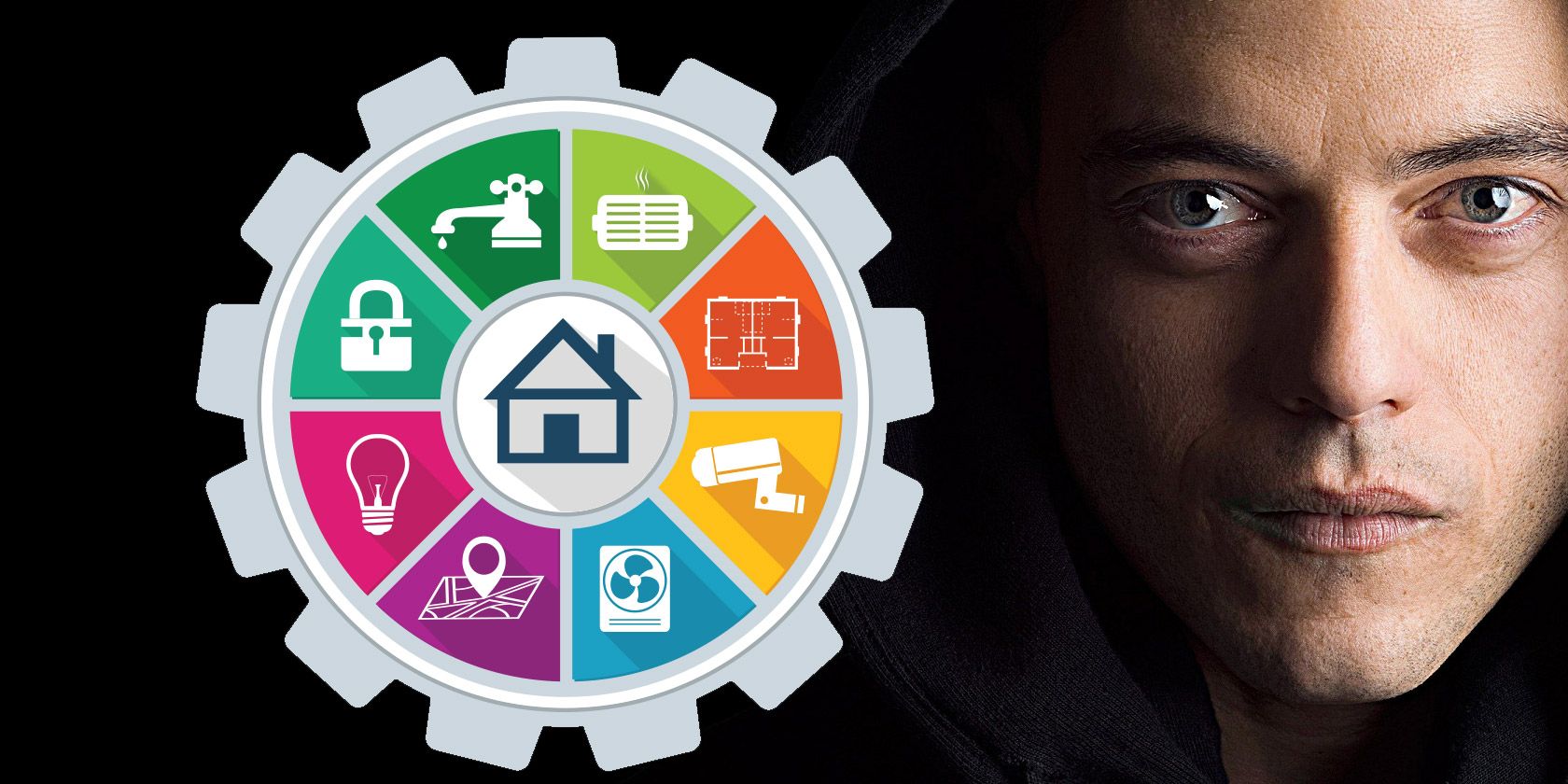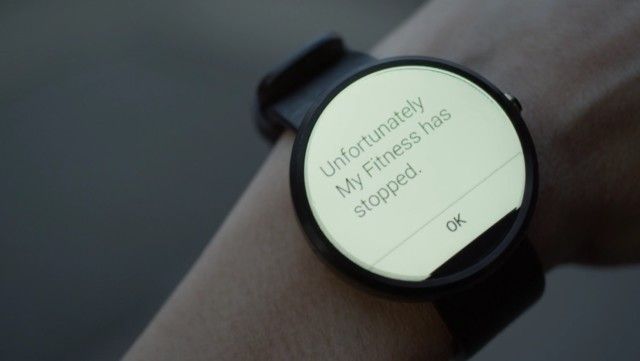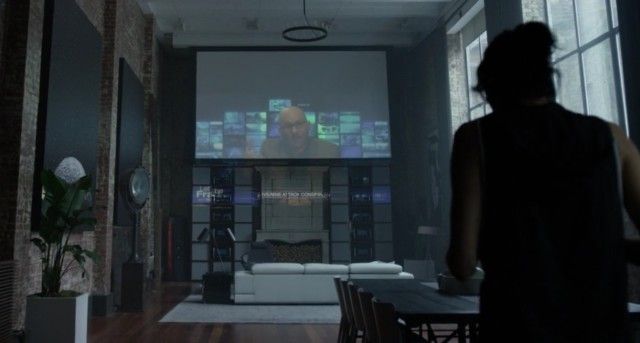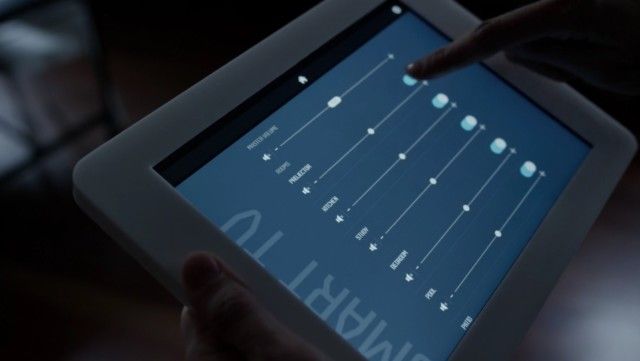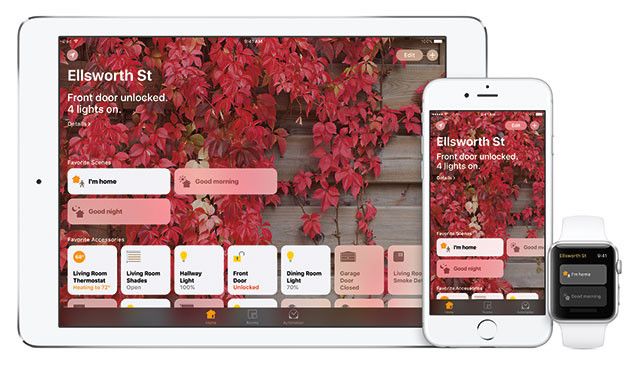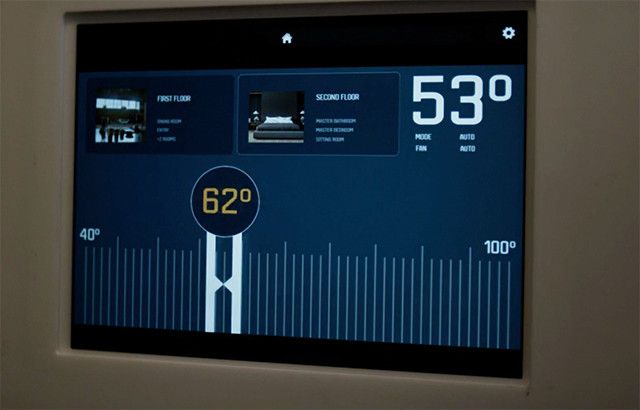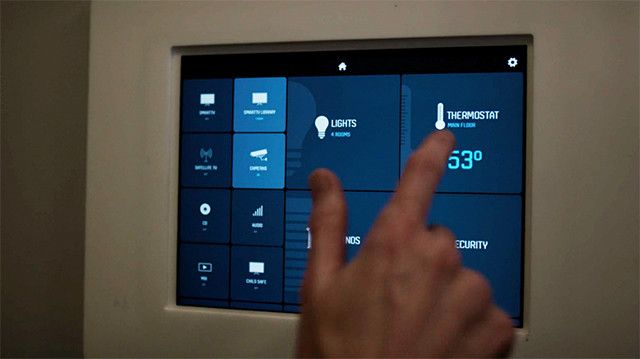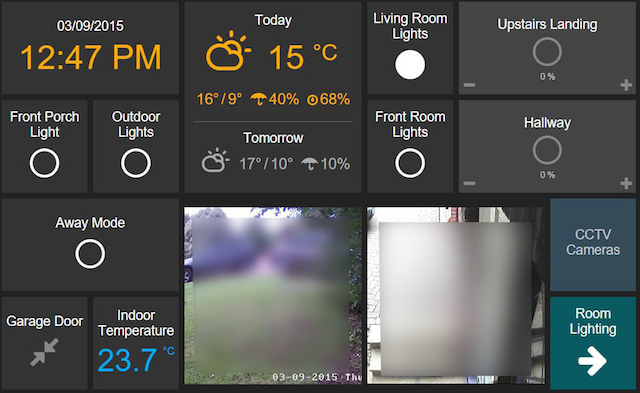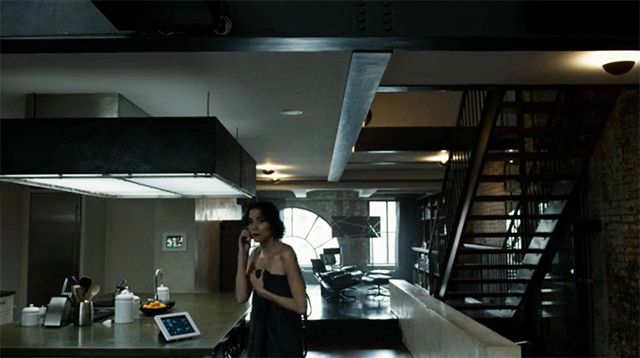Kicking off the second season of Mr Robot with a bang was a smart home gone mad: the fsociety collective hacked the home of Susan Jacobs, General Cousel at Evil Corp. They randomly activated lights, alarms, AV systems, and even adjusted water temperature to try and scald her – eventually driving her out of town while she waited for it to be repaired.
Ignoring the fact that it was so easy to hack, and therefore no real brands would actually want to be associated with the episode, let's take a look a look at the hardware featured scene-by-scene and see what we can figure out.
In all likelihood, the system was installed by a high-end home automation dealer, and it most resembles either Crestron or Control4, both of which are on the level of "if you have to ask how much it is, you can't afford it". These are outside the budget of everyone except the super-elite, but the beauty of the modern smart home is that everything you saw in the episode can also be achieved with off-the-shelf hardware and a little legwork. So what have we got?
Presence Sensing
The sequence begins with Ms Jacobs arriving home from a run to find her generic fitness tracking service "My Fitness" is offline, so she can't record her run. Whether or not this ties into the smart home system is unclear, but you can use health tracker such as Fitbit to trigger IFTTT actions and automate your home, so it's possible.
As Susan enters her home, the alarm triggers and she fumbles around to manually disable it, perhaps because she was so used to having a geofence on her phone or smartwatch automatically disable the alarm when she approached the house.
This is easily achieved with a presence sensor and Samsung SmartThings, and I even showed you how to setup a DIY solution using a Raspberry Pi that scans for a Bluetooth device.
Approximate cost: Free, with IFTTT and your existing smartphone.
Home Cinema and Tablet Interface
The home cinema then kicks into action with some anti-capitalist news show, and she pulls out a tablet (deliberately disguised in an oversized white case to hide the brand) to deactivate the errant projector and screen.
Nearly all of the current generation of smart home systems have a smartphone or tablet app, so this isn't anything unique. Apple's HomeKit is notably absent from this list, with a stock Home app promised for inclusion in the next major OS update this year.
You needn't own a "Smart TV" just to have it integrated into a smart home system either: the Harmony line of all-in-one remotes and hub can control a huge range of "dumb" AV devices through standard infrared codes, just like the original remote that came with them (see my review of the Harmony Ultimate).
You can buy just the hub, but you probably want the Elite model, which comes with a physical touchscreen remote too.
Approximate cost: $350 for each entertainment room
Once your Harmony is setup, you can further integrate it with DIY solutions like OpenHAB, or Samsung SmartThings, and more!
Automated projection screens are a little more difficult to find, and there don't appear to be any off-the-shelf smart home solutions. If your motorized screen has a RF remote though, my DIY guide will allow you to integrate this to a system like OpenHAB; or for a more beginner friendly solution, the Hook hub offers Amazon Alexa and IFTTT to RF bridging capabilities for $50. This one's a bargain:
Whole House Audio
Classical music erupts loudly as Susan emerges from her indoor pool. There's many whole-house audio systems out there, but my personal favorite is Sonos (our review of the Sonos Play:1) – which sounds stunning and has a robust remote control system.
It's quite "hackable" too, but in a good way: I've previously shown you how to use a Raspberry Pi and Sonos speaker to play custom voice notifications.
If you want to start a Sonos system, perhaps with a speaker in your office or home cinema, I'd suggest the Play:5 model, which is the only one with a standard line-in socket for connecting your PC or existing audio device. The other devices in the range are currently for streaming only.
If $500 for a single speaker seems a little pricey, or if you already have speakers everywhere and just want the ability to stream music to them, Chromecast Audio is a $35 device that plugs into a standard 3.5mm stereo jack. You can cast to multiple devices at the same time, and there have even been some custom integrations for OpenHAB.
Approximate cost: $35 to $500 per room.
Heating and Water Temperature
Showering off after a swim, her shower temperature gradually increases, trying to scald her. This is (fortunately, depending on how you look at it) a little TV magic. Digital shower controllers do exist – check out the the Kohler DTV and Moen ioDigital – but nothing on the market is currently web connected.
After being scalded, Susan finds the house is abnormally cold: someone has hacked the thermostat, and it refuses to warm up.
We're big fans of the Nest thermostat and HVAC controller here, but it's not your only option. If you choose a Nest, we've got lots of tips and tricks for you.
Approximate cost: $250 for a Nest Generation 3.
Wall Mounted Dashboard Control
The Dashboard is the center of this smart home, providing a polymorphic interface which controls every aspect of the home. It's clear that this all feeds into a single hub – Susan doesn't need to open up several different apps for each smart device – so what's on the market that can offer such a neat interface?
Samsung SmartThings is one such hub that connects to a multitude of devices, compatible with both their own brand of sensors, as well as hundreds of existing ZWave devices. In terms of a neat interface, SmartTiles is a fully customizable dashboard with a variety of styles to choose from.
For DIY solutions, Dashing.io offers similar functionality. You'll need to deploy it to Heroku, or understand how to run Ruby applications on your local server.
For OpenHAB specifically, which is my personal DIY smart home controller of choice (running on a Raspberry Pi), community user Smar outlined how he coded up his version of the Dashing.io dashboard, which displays on wall-mounted Nexus 7 tablets. We can all agree it looks gorgeous, but even cooler is that they've set up the Nexus' to run Tasker and Motion Detector, such that the dashboard automatically opens up when they walk in view of the front facing camera, then turns off after a short while.
HomeSeer is another alternative which offers a design tool to create your own mobile app and dashboard interfaces – but it's pricey, at around $600 for the software alone (you need to supply your own PC to run it on).
Approximate cost: $250 - $600 for a central hub or software controller, assuming you have one or more tablets already to use as a dashboard.
Connected Lighting
The lights flash on and off in this climactic scene, as the music begins again, the phone rings, the burglar alarm can't be turned off, and TV just won't shut up. Oh dear.
Connected bulbs are probably the easiest smart home kit to get started with, and there's a huge range of options – but we'd recommend sticking with the big brands like Philips Hue and LiFX. They're priced similarly, at around $60 per color bulb or half that for dimmable white only. LiFX operates over your existing Wi-Fi network, while Hue requires the use of a Zigbee hub (included in the starter package) to create it's own mesh network. Both are widely supported with IFTTT, Samsung SmartThings, OpenHAB, and other smart home systems.
Approximate cost: $30-60 per bulb, depending on whether you want RGB color bulbs or just white.
After a phone call to technical support (probably intercepted by the fsociety), poor Susan is forced to leave and stay at her second home.
Is this your dream smart home? As you can see, it's all perfectly achievable without breaking the bank. Or do you already have something similar? Tell us about the devices you use in the comments!
Image Credits:Smart home by Macrovector via Shutterstock

